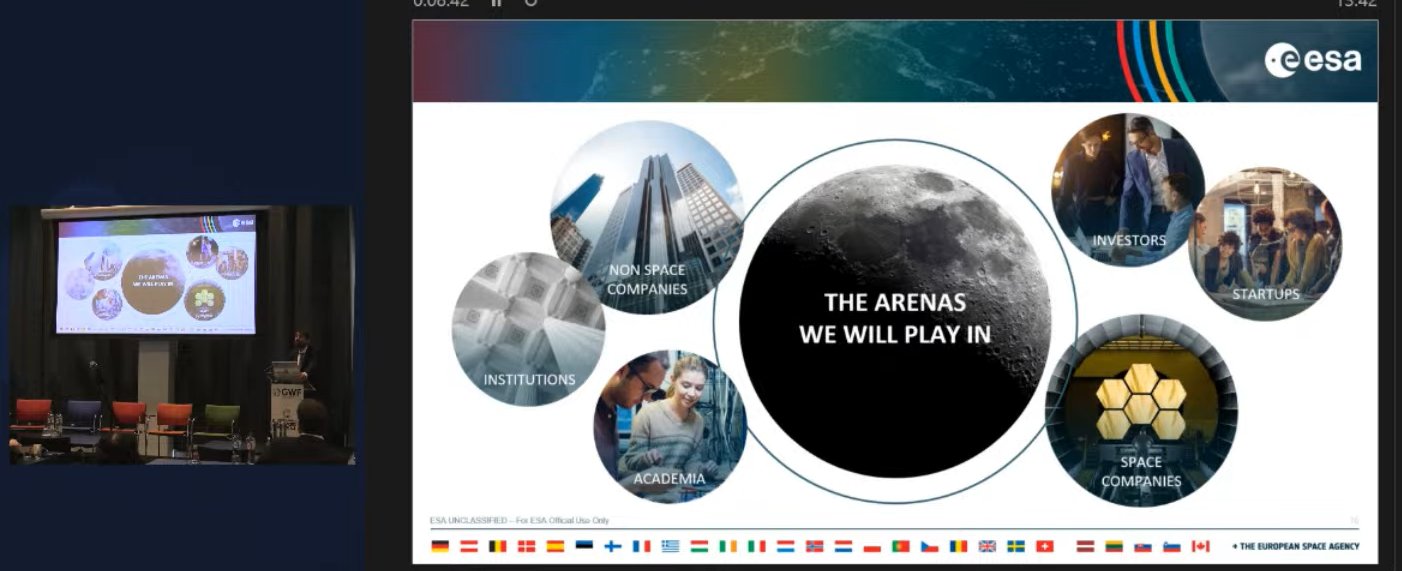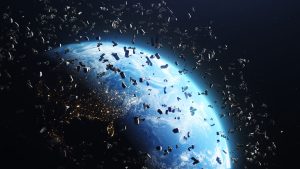New-age space startups are popping out of thin air, as it seems. But the valour to take upon the long dragged challenges and to overcome them without a proper business model is something that the space sector has needed for a long time. Now that the commercialization of Space is greater than ever, these startups look to cash on the opportunity and take the risk of being the first movers.
A panel to discuss the same was held with the theme New Space & Commercialization in EO. Moderated by Gunter Schreier, Deputy Director, German Remote Sensing Data Center, DLR, the panel consisted of various startups from the European and South-Asian regions. European Space Agency was also present to give a different perspective of being an incubator and active investor.
Gunter expressed his elation while kick-starting the session and said, “Now for a couple of years, we are seeing various start-ups, some of them born out of big companies and some of them coming out of universities. This session is about showing their perspective.”
Shortly after, Lena Halounova, President ISPRS took the stage to give the audience an insight into the ISPRS.
“We are a society which was founded in 1910 in Austria, focused mainly on academia. But since the implementation of remote sensing in 1980, it was spread among other organizations, companies, and space agencies, and academia itself could not have survived without cooperation or practice,” she said.
Opportunities and Challenges Ahead
Gianluigi Baldesi, Senior Commercialisation Officer, European Space Agency, France, while talking about the opportunities for ESA said, “Of course, the launch prices are going down, which is positive for us, whereas the availability of launch pads to fly is increasing. Space capacity and performance are also increasing a lot. There is an increase in awareness of the potential of spatial data and applications.”
However, he spoke about the challenges on the other hand and said, “Reaching out and finding potential investors for the CAPEX is a difficult task as of now. The other challenge revolves around business expertise to move from an engineering-driven company to a business-driven company.”
“We are launching Thermal Infrared with 3.5-metre resolution. There’s no commercial company that is currently providing data at this level of resolution,” Alex Gow, Sales Director, SatelliteVu, UK claimed.
“When it comes to sustainability, we are providing operational services to companies that are managing large solar farms. The value we are providing here is to identify faults in large solar farms. This helps better guide maintenance crews that are sent to fix these issues,” he added.
Data Fusion & Sustainability
Talking about the SAR satellite StriX, Motoyuki Arai, CEO, Synspective, Japan, explained, “This satellite enables the world to acquire reliable, significant, and broad data. From this, we analyse the data for end users and provide many solutions. For example, we provide land displacement monitoring, flood damage assessment, and forest inventory management with the data we collect.”
“Currently, we have three satellites. But by 2027-28, we will have the 30 satellite constellation, and then we will provide near-real-time dataset covering the earth,” he emphasized.
Explaining a new concept Suyash Singh, Co-Founder & CEO, GalaxEye elaborated, “Since Visual Imagery Satellite provides high-resolution images but gets hindered by an object in view, such as clouds. Whereas Radar Imagery Satellite can penetrate through clouds but provides low-res imagery. This provided an opportunity to combine the best of both the satellites, which is where we come in.”
“We are combining a multispectral and a radar sensor on the same satellite, making it work in synchronization and tandem. This is another effort to bring in another dimension of the satellite imagery, notwithstanding with only one sensor but giving you a data fusion layer to work with more satellites,” said Singh.
Sorting Imagery
Christian Beilschmidt, Co-Founder, Geo Engine GmbH, Germany, talked about his company’s platform in detail and how it is used for mitigating various mapping and imagery issues.
“The Geo Engine is a platform for geoprocessing and analysis. We really love to use all the data that is available and connectible. We provide native time series processing, which makes the workflows reusable and makes it easier to work with. We have started to integrate ML frameworks into the Geo engine while also using ML ingestion inside,” he said.
After the presentations were over, the panel sat together to answer various questions from both the moderator and the audience.
Beyond the Threshold?
Gunter asked about the views on new startups in the space sector and whether it will reach a saturation point, emphasizing the increasing quantity of space startups day by day.
To this, Gianluigi responded, “I think there are many opportunities and some overlap, but this overlap translates into competition. It is very interesting and important to stimulate this competition. Of course, from a certain point of view, it is very challenging. But as we go on the other side, it is very interesting for the market as well. There are also a lot of priority investors who enhance the entire process and act as incubators.”
Gunter then asked Arai if there was more room for startups and systems in space.
Arai answered, “I believe there is more room, but I think there is too much space. Certain concentration is required to survive in this sector, but it is very difficult to stay. Because we only have enough human resources. So we have to renew our approach so many times and be agile. This is where many startups struggle.”








